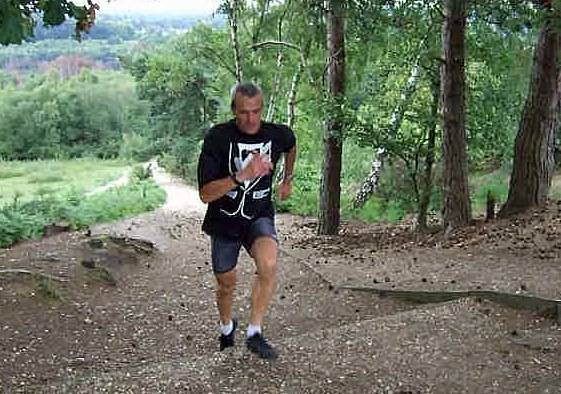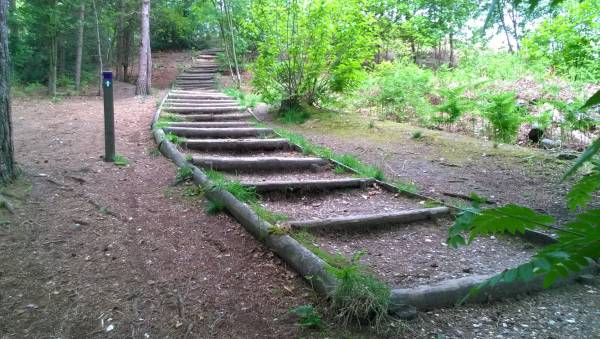Cycling is a great activity for recreation and sport. It doesn’t require much equipment and you can get a good cardiovascular workout, develop strength by going up hills, become more adept at balancing, and improve reaction time – as well as changing your mental and visual focus from near to far field.
But in a wider context of overall fitness, cycling does have drawbacks. It puts you in a restricted zone of movement constrained by the bicycle. And if you spend all day sitting in an office, then sitting on the cycle puts you in a similar position again. It also can be hard to get your cycling training in if you’re on the road for work.
So here’s my simple solution that will still help you in your cycling goals, but also in your goals to be a healthy and well-rounded human being. (And it’s simple enough you can do it almost anywhere.)
Get Moving
Activities in everyday life can require a much greater range of movement than cycling. So while you may become a fit and powerful cyclist over a relatively narrow range of motion, you may get lulled into a false sense of security when trying to perform other tasks.
In the worst case this might result in an injury as you lift the groceries out of the car, play with younger members of the family, join a friend in a racquet sport, or reach out to lift a heavy item when doing house chores. Such a simple injury can then impact your ability to cycle while you wait to recover.
“In order to get better at cycling, you need to do activities that resemble cycling. However, the ability to be resilient as a person means taking up sports for general fitness or having a good all-round level of robustness over a wide range of motion.”
This brings us back to the key topic of specificity. In order to get better at cycling, you need to do activities that resemble cycling. However, the ability to be resilient as a person means taking up sports for general fitness or having a good all-round level of robustness over a wide range of motion. And if you are an avid cyclist, doing a different activity from time to time can also help prevent feeling stale from high levels of training and can restore motivation.
On top of all that, some of the people I work with travel frequently with their jobs and have concerns about maintaining their cycling fitness while they are away from home and their bike. Hotels don’t always have the gym facilities these people would like and time spent channel flicking in the hotel room could be spent more usefully with some simple exercise.
My Favorite Way to Cross-Train
So, to solve all these problems, here is one of my favorite cross-training activities for cyclists. All you need to do is pack some outdoor shoes and suitable sportswear and then find a steep section of ground for some hill sprints.

Me nearing the end of a thirty-second hill sprint.
Hill sprints will raise your heart rate, work your upper body and core, develop proprioception and general motor skills, provide some impact for improved bone density, help assist a more upright posture, and develop explosive power in your legs to help with cycling.
I’m fortunate to have a hill near me that takes approximately thirty seconds at full sprint to get to the top. Thirty-second intervals are one of the formats a 1999 study found beneficial (this was a topic of a previous article of mine entitled Do Your Intervals Count?)

The hills where I do my sprints.
Taking the longer path back down the hill gives me time to recover before the next thirty-second sprint. The jog to and from the hill make a good warm up and cool down, too. I prefer the trails to the road where possible as the air has less traffic pollution and the irregularity of the ground helps with more general proprioception and balance. It only takes a few minutes to perform each interval and together with the warm up and cool down you can get a great workout in 45 minutes total.
What the Science Says
In 1999, a study published in Sports Medicine looked at the effects of cross training between cycling, running, and swimming. The study concluded there was some transfer of training effects to improve VO2 max even though the training might be considered non-specific. Running had a more beneficial transfer than swimming. Sport-specific training, as expected, had the most benefit.
“As usual, if you are not used to running, then ease into the exercise gently. Running requires a far higher level of resilience to impact than cycling and if you start too aggressively you may injure yourself.”
So, if you are feeling in need of a change from cycle training to help with motivation, wish to develop a more balanced level of overall fitness than cycling on its own can provide, or find yourself away from home on business, I recommend some hill sprints.
As usual, if you are not used to running, then ease into the exercise gently. Running requires a far higher level of resilience to impact than cycling and if you start too aggressively you may injure yourself.
I like to include a couple of sessions per week (at least one) in my own routine in addition to cycle training and any other activities, bearing in mind that many of the same muscle groups are being used. Also, a hill running session may be more agreeable to you than missing training due to bad weather.
Further Reading:
- Cyclist’s Syndrome: What You Don’t Know Might Hurt You
- Why Heavy Lifting Is the Best Winter Activity for Cyclists
- Power to the Pedal: Be a More Efficient Cyclist
- New on Pulse Beat Fit Today
References:
1. H Tanaka, Effects of cross-training. Transfer of training effects on VO2max between cycling, running and swimming. Sports Medicine, 12/1994 330-9.
2. NK Stepto, “Effects of different interval-training programs on cycling time-trial performance,” Medicine and Science in Sports Exercise, 1999 May;31(5):736-41.
Photo 1 courtesy of Shutterstock.






